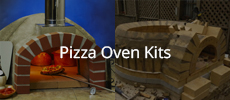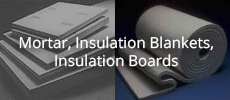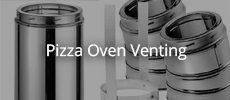
X
-
+3 on Russell's and Jr comments. In post #197 there is a pic of scribing the arch. On the form in that pic is you can see a guide that we used to keep the face of the arch flush. Another pic showing the front of the arch can be found in the link provided in that post. I'm going to add one of those pics and another to this post. Taking the time to build templates and forms can make things a lot easier. Note: That 2" "bumper" was later used to to set the shape of the entry in this case. I hope this makes sense to those that are now doing their research. It may make more sense to those that have been around the block once or twice
Last edited by Gulf; 02-20-2023, 06:09 PM.
-
I think one idea I like from somewhere in the reading I did was working with a metal fabricator to form the chimney landing. There's a great place on our neighborhood - Vinje & Son Sheet Metal - that does custom sheet metal fabrication for all kinds of DIY heating and cooling projects. I think I'll take the plans and my template down there and pick their brains, as well as get a fabricated chimney landing. I planned on getting my chimney materials from them anyhow.[/QUOTE]
If you go that route, make sure it is fabricated from stainless.
Leave a comment:
-
Following up on Russell's comment, you should set the forward face of your arch form perpendicular to the floor and at 90 degrees from a line to the oven center, and forward enough to be at the distance you want the arch face to be. Then you can "index" the arch bricks to be flush with the form as you set them and the result will be all the forward faces on a plane that you can set your door against. This is what I was trying to say back in post #180 but probably was not clear.2 PhotosLast edited by JRPizza; 02-19-2023, 11:41 PM.
- Likes 1
Leave a comment:
-
The outer brick faces needs to be flush with each other or the reveal for your door that sits against it will have gaps. Should be easy to trim off face.
Leave a comment:
-
Well this is a little late but as it's my first post of the year, Happy New Year everyone! I was excited to get rolling on the oven but this winter has been unreasonably wet, cold, windy, snowy, and just plain busy! But finally I got a little gap in the weather and workload and was able to get a few hours in on the oven today.
When I left off, I was trying to rectify the situation of cutting the opening arch bricks incorrectly. I thought I had it solved but didn't get to recutting the bricks before the weather turned. Today I decided to follow the addage, "measure twice, cut once, get feedback on erroneous cut, measure three times to fix the incorrect cut, and then cut again!" I think I got it right this time!
The issue was with the cut from IR to ER on the inside, top of the arch bricks. Due to the prior error, most bricks were undercut, but there were a few that were nominally overcut at the peak of the opening arch. I re-checked all the measures today, using the technique of attacing the coping saw to my IT to mark the exterior arch.
Photos below are the end result. My only concern is that the front of the bricks, toward opening arch, are now a little uneven. I'm wondering if I should cut off the lonber bricks so the the front faces are all even before I move on. Welcome the feedback. Thanks everyone!
Leave a comment:
-
Either way works but if you do the arch in layers be sure to keep the arch course ahead of the dome courses, it is easier to bring and dome into the taper arch rather than trying to cut a complex mating brick with the dome ahead of the arch. I built the arch complete to make sure is all came together. You risk the top of the arch not fitting due to mortar joint thickness creep.
Leave a comment:
-
It's six one half a dozen the other imo. The geometry doesn't change. I like completing the arch first as it allows for the arch form to be dropped much sooner for clean up. Even with completing the arch first, two or three dome courses should be partially completed on the arch side. That is done to give the arch stability since the upper arch brick protrude into the dome making it extremely top heavy.
Leave a comment:
-
Folks - I've been looking through threads on building opening arch and trying to decide, should I go ahead with mortar for the entire opening arch first, and then build an mortar the oven dome layer by layer? Or should mortar the opening arch at the same level as my dome? I've seen pictures both ways but not sure if there is a preferred approach.
Cheers,
Mac
Leave a comment:
-
Given that most castable refractory products contain burnout fibres as well as instructions for first firing schedules is an admission that steam spalling is a common problem for thick joints and why slow firing schedules alone are insufficient. When firing with wood a slow controlled rise is almost impossible to achieve unlike gas electricity or oil that can be finely metered. Why else would refractory mortars limit the size to 1/8"? A small brick oven will have gaps on the outside of the dome that may well exceed 2". The larger the radius the smaller the gap, so the problem is reduced, but certainly always exceeds 1/8" Filling these gaps with brick wedges is a way of reducing the thicknesss of the mortar joint as well as utilising waste offcuts.Originally posted by Gulf View PostMacrinehart
From what I can see in your pic, the top arch bricks shouldn't be very far off from the taper. I agree with JRPizza in his post #176. I too like a thicker mortar joint on the outside of the dome. You will probably find that you can compensate when cutting the dome brick to intersect the arch.
Thanks david s,
I wouldn't want anyone to confuse my advise for a home brew mortared brick dome with the refractory calcium aluminate cements which have a 1/8th" tolerance. I'm also sure that 2"+ home brew castables need a little more attention to their ingredients. However, as far as steam spalling is concerned for a home brew mortared brick oven......... that is what the curing and drying schedule is for.
From my experience the homebrew recipe's high clay proportion sometimes leads to shrinkage cracks, so I halve it. I know the clay imparts a degree of refractoriness, so while the lower clay proportion fixes the shrinkage problem, I'm not sure if it has other drawbacks, so don't take my lead on that idea.I do however, always add some burnout fibres which also hold the mortar together well.Last edited by david s; 11-30-2022, 04:20 AM.
Leave a comment:
-
Macrinehart
From what I can see in your pic, the top arch bricks shouldn't be very far off from the taper. I agree with JRPizza in his post #176. I too like a thicker mortar joint on the outside of the dome. You will probably find that you can compensate when cutting the dome brick to intersect the arch.......I was concerned about shrinkage and cracks but based on your guidance I can get away with a little extra mortar or using some waste material......
Thanks david s,Commercial refractory mortars recommend that only really thin joints are suitable. I am not totally sure why, but suspect they are covering themselves for warranty issues due to failures caused by steam spalling. As the same issues arise with steam spalling in a thick homebrew joint a simple remedy used for castable refractory would seem a sensible solution. The addition of fine polypropylene burn out fibres to both commercial refractory mortar as well as homebrew mortar will certainly reduce the risk of steam spalling, The drawback is that they require extended mixing time for proper dispersal. insufficient dispersal results in the fibres clumping and does not produce the adequate network of mini pipes that allow moisture to escape. This is something that does require some experience regarding dosage and mixing times.
I wouldn't want anyone to confuse my advise for a home brew mortared brick dome with the refractory calcium aluminate cements which have a 1/8th" tolerance. I'm also sure that 2"+ home brew castables need a little more attention to their ingredients. However, as far as steam spalling is concerned for a home brew mortared brick oven......... that is what the curing and drying schedule is for.Last edited by Gulf; 11-29-2022, 06:48 PM.
Leave a comment:
-
Commercial refractory mortars recommend that only really thin joints are suitable. I am not totally sure why, but suspect they are covering themselves for warranty issues due to failures caused by steam spalling. As the same issues arise with steam spalling in a thick homebrew joint a simple remedy used for castable refractory would seem a sensible solution. The addition of fine polypropylene burn out fibres to both commercial refractory mortar as well as homebrew mortar will certainly reduce the risk of steam spalling, The drawback is that they require extended mixing time for proper dispersal. insufficient dispersal results in the fibres clumping and does not produce the adequate network of mini pipes that allow moisture to escape. This is something that does require some experience regarding dosage and mixing times.Originally posted by Gulf View PostRemember that home brew mortar is fairly forgiving if the gaps can be filled with mortar. A half to 5/8ths inch is ok imo. Anything over can sometimes be stretched with a sliver of waste cut placed in the middle of the bed joint.
Leave a comment:
-
Good point, I was concerned about shrinkage and cracks but based on your guidance I can get away with a little extra mortar or using some waste material.
In addition to the days getting shorter, weather is getting cold now with snow possible later this week. In anticipation I've taking the canopy down and covered everything with tarps. Will have to see if weather cooperates.
Cheers,
Mac
Leave a comment:
-
Remember that home brew mortar is fairly forgiving if the gaps can be filled with mortar. A half to 5/8ths inch is ok imo. Anything over can sometimes be stretched with a sliver of waste cut placed in the middle of the bed joint.
Leave a comment:
-
At the end of the day I've been able to mark up all but the last 2 blocks in the arch. The 5 blocks at the peak of the arch, including the keystone, were cut two deep on the overcut so will have to be redone. The rest can be salvaged.
Leave a comment:





Leave a comment: